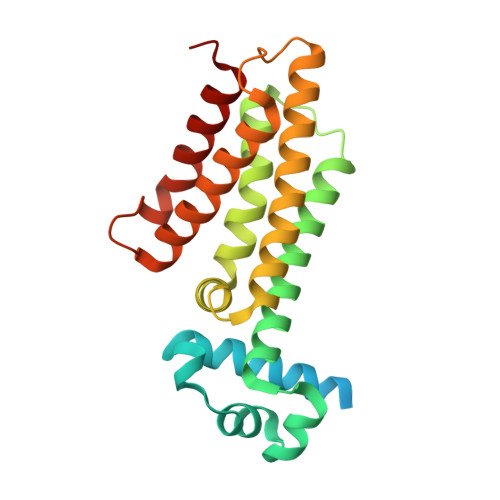Exploring drug target flexibility using in situ click chemistry: application to a mycobacterial transcriptional regulator.
Willand, N., Desroses, M., Toto, P., Dirie, B., Lens, Z., Villeret, V., Rucktooa, P., Locht, C., Baulard, A., Deprez, B.(2010) ACS Chem Biol 5: 1007-1013
- PubMed: 20704273
- DOI: https://doi.org/10.1021/cb100177g
- Primary Citation of Related Structures:
3O8G, 3O8H - PubMed Abstract:
In situ click chemistry has been successfully applied to probe the ligand binding domain of EthR, a mycobacterial transcriptional regulator known to control the sensitivity of Mycobacterium tuberculosis to several antibiotics. Specific protein-templated ligands were generated in situ from one azide and six clusters of 10 acetylenic fragments. Comparative X-ray structures of EthR complexed with either clicked ligand BDM14950 or its azide precursor showed ligand-dependent conformational impacts on the protein architecture. This approach revealed two mobile phenylalanine residues that control the access to a previously hidden hydrophobic pocket that can be further exploited for the development of structurally diverse EthR inhibitors. This report shows that protein-directed in situ chemistry allows medicinal chemists to explore the conformational space of a ligand-binding pocket and is thus a valuable tool to guide drug design in the complex path of hit-to-lead processes.

















